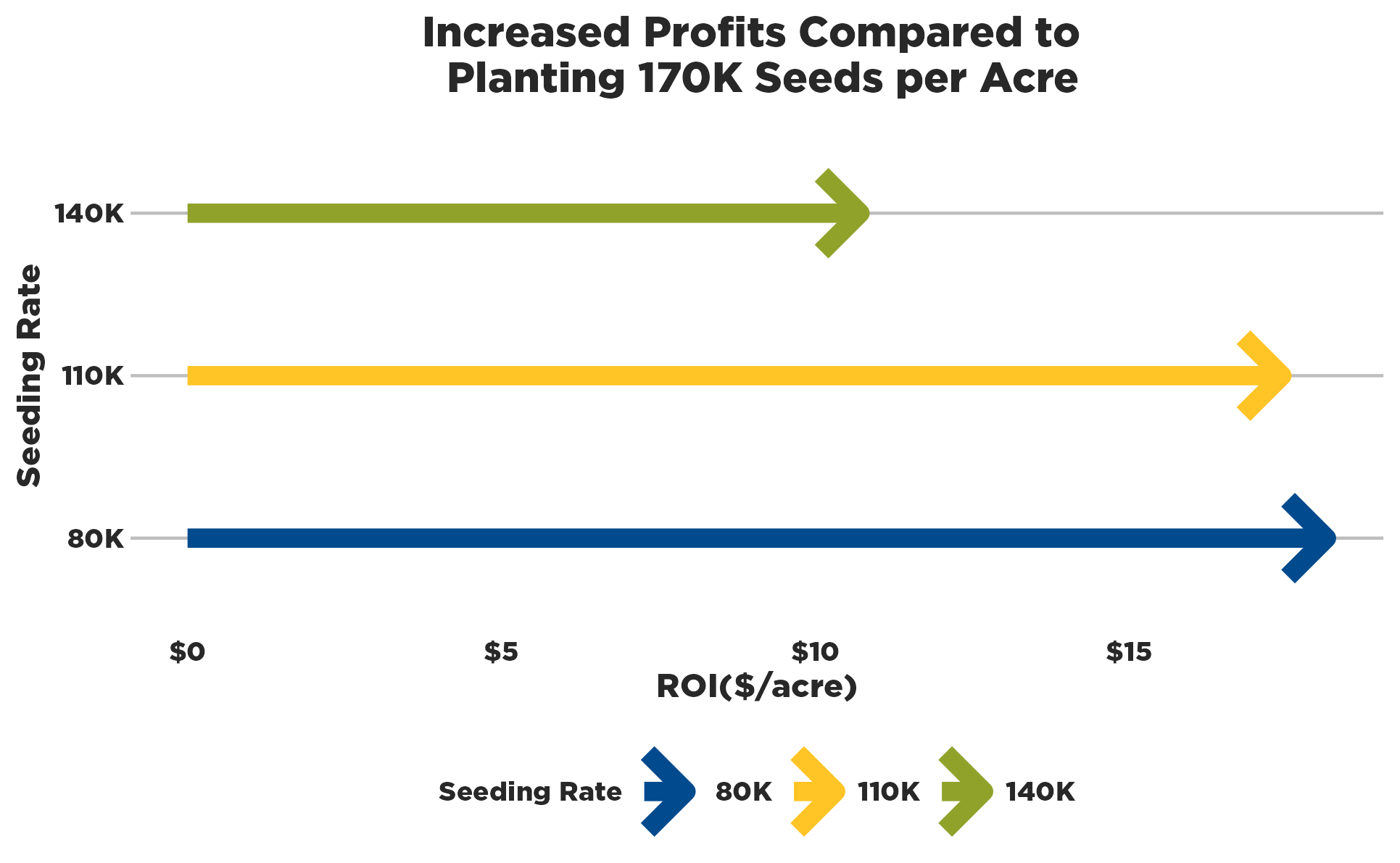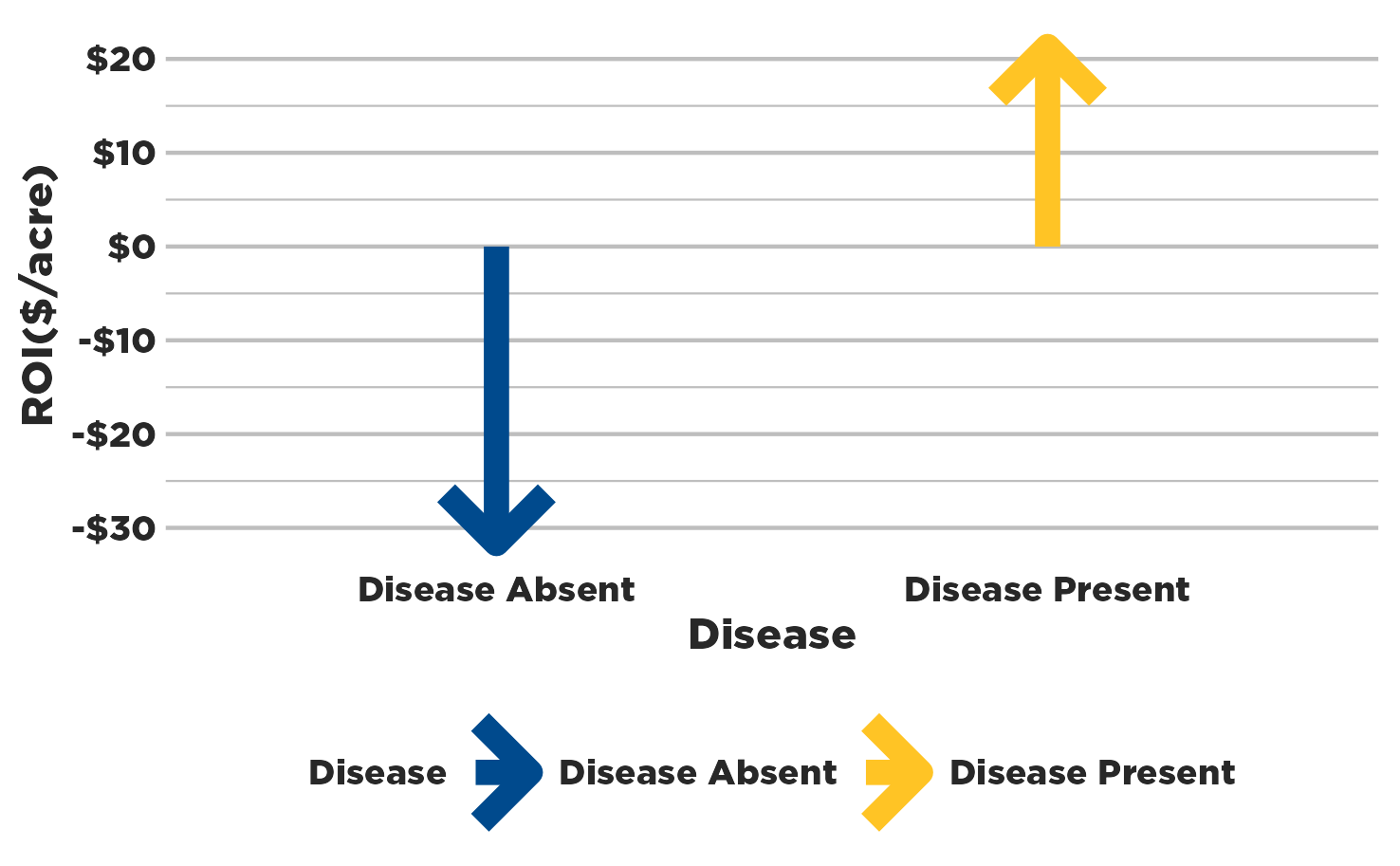
(Photo: Iowa Soybean Association / File Photo)
Seeds, savings and strategy - Maximizing input ROI
May 28, 2025
3 Key takeaways
- ISA trials show planting 80,000-110,000 seeds/acre yields nearly the same as higher rates but at a lower cost
- Fungicide ROI depends on disease pressure
- Accurate cost-benefit analysis of inputs is crucial for profitability
Soybean production profitability hinges on accurate management practices for controlling input costs while maximizing farm revenue. Among these, planning the appropriate population rate per acre, and necessary weed and fungicide programs can do a lot for improving return on investment (ROI) efficiency.
Soybean seeding rate
Optimizing soybean seeding rates can significantly influence profitability. The Iowa Soybean Association (ISA) has conducted trials for years to better understand the value of per-acre production across regions and seasonal weather.
Data from ISA on-farm research trials in 2023 and 2024 shows planting populations at 80,000 or 110,000 seeds per acre yielded similar or slightly less than higher seeding rates. However, it was significantly more profitable.
This is because the slight increases in potential harvest revenue from higher rates were less than the known cost of extra seed per acre.
For example, at $64/unit seed cost (including seed-applied treatments), changing population rates from 170,000 per acre to 80,000 per acre resulted in a $18.14 per acre increase in profitability while cutting preseason seed costs by over half when soybean prices are at $10 per bushel. Savings are further boosted by higher seed costs (see Figure 1 below).

To get the most out of any rate, early planting consistently boosts yields. Fields planted in April out-yield May planted soybeans by 3-5 bushels. Trials also determined that early-planted soybeans do not need higher planting rates to maintain yields and profitability.
The recent ISA studies underscore the "less is more" approach, where lower seeding rates yielded comparable or superior due to lower seed costs. Given current market dynamics and input expenses, careful calibration of seeding equipment can substantially enhance profitability.
Fungicide use
In deciding to apply fungicides in soybeans, farmers must include disease likelihood, product cost and expected returns.
Fungicide trials conducted by ISA in 2023 and 2024 evaluated Delaro Complete, Lucento, and Miravis Neo, highlighting their varied effectiveness against common soybean diseases such as frogeye leaf spot. Yield responses and ROI varied considerably based on disease presence and fungicide efficacy.
For best economic return on the cost of fungicide applications, ISA calculates that crop damage should rank 3 on a damage scale of 1-9. Field assessments by ISA indicated fungicide application typically showed positive ROI in fields where disease presence was confirmed at this threshold or higher.
While this scouting is often too late to inform spraying in and of itself, farmers are encouraged to do so to understand their field’s pressure for the future. Based on field history, such as prevalence and population rates and environmental conditions such as rain and humidity, farmers should have a decision threshold to guide their decision to apply.
Recent years have been dry during the development stage when frogeye leaf spot becomes prevalent, reducing the pathogen’s pressure as well as the ROI potential of using fungicides those given years. Thus, blanket application of fungicides consistently year over year may not be as cost effective as understanding environmental pressures and one’s field (see Figure 2 below).

Pay close attention to the weather forecast and know your damage threshold before committing to a blanket application.
Reducing reliance on fungicide under low pressure seasonal weather conditions saves money and aids future production by minimizing pathogen resistance to the fungicides.
Cost analysis
ISA remains committed to helping farmers improve their farm’s productivity and focuses on maximizing ROI of those operations. If you are interested in participating in future research trials or have a request for ISA to potentially investigate as a topic, scan the QR code below or email me.
Written by Alex Litvin, PhD.
Back